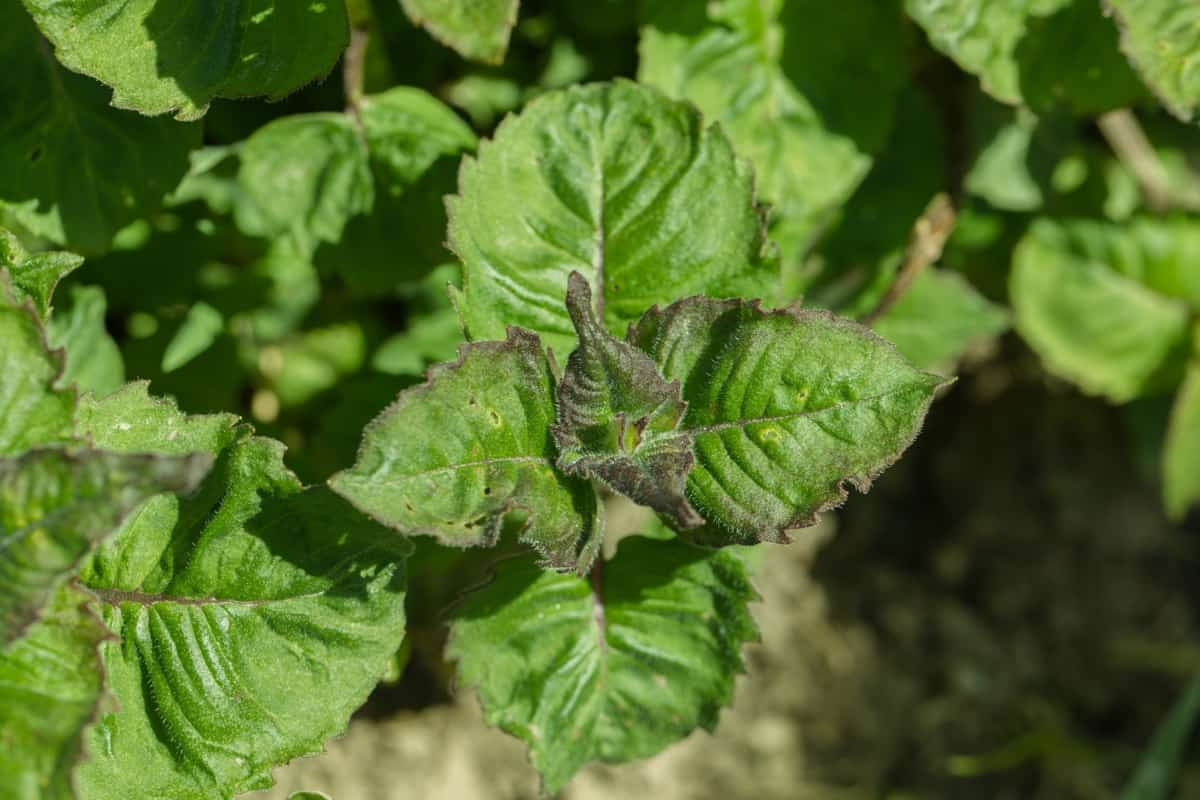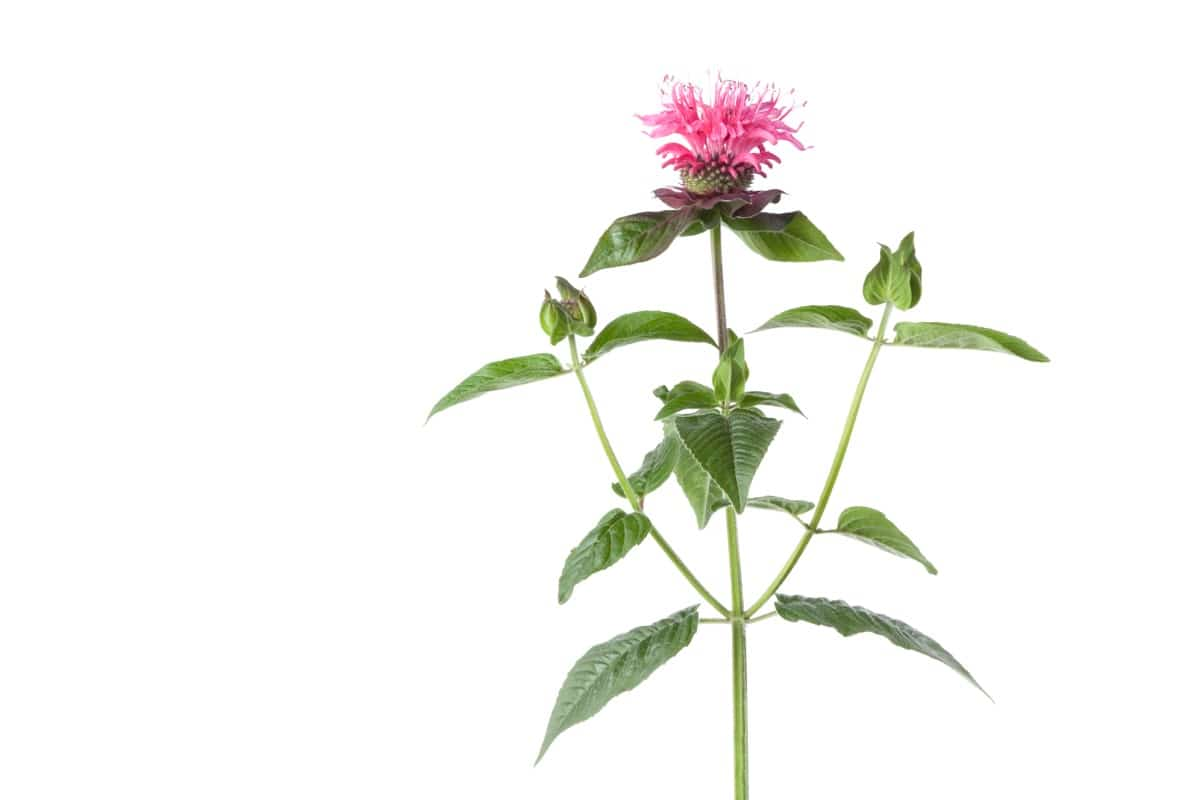Lemon Mint, or Monarda citriodora, is a delightful herb that brings a refreshing citrus flavor to any culinary creation. With vibrant green leaves and clusters of delicate light purple flowers, organic Lemon Mint adds a touch of beauty to your garden or indoor space. Its distinct fragrance not only pleases the senses but also acts as a natural repellent for pesky insects.

How to Grow and Care for Organic Lemon Mint
Best Soil for Organic Lemon Mint
Start by planting the seeds directly on the soil’s surface in early spring, ensuring they receive plenty of light. It’s important to keep the soil adequately moistened during this time. Once the seedlings have become established, you may need to thin or transplant them for proper spacing.
Growing Organic Lemon Mint Indoors
- This herb thrives in full sun, so be sure to plant it in a location that receives 6 hours of direct sunlight daily.
- Organic Lemon Mint prefers well-draining soil that is rich in organic matter.
- To encourage bushier growth and prevent legginess, pinch back the plant tips regularly. This will help promote branching and result in a fuller and more compact plant.
- Keep an eye out for any signs of pest or disease infestation. Organic options like neem oil or insecticidal soap can help control common pests like aphids or spider mites.
How to Propagate Organic Lemon Mint?
From Seeds
Start by planting the seeds directly on the soil’s surface in early spring, ensuring they receive plenty of light. It’s important to keep the soil adequately moistened during this time. Once the seedlings have become established, you may need to thin or transplant them for proper spacing. This step is crucial for ensuring that each plant has enough room to grow and thrive. If you prefer starting your Lemon Mint indoors before moving them outdoors, sow the seeds about 6 – 8 weeks before the last frost date and then transplant them when it’s time.
From Stem Cuttings
Select a healthy stem from an established Lemon Mint plant. Using clean pruning shears, snip off a 4–6-inch section of the stem below a leaf node. Remove any plant leaves from the lower portion of the cutting, leaving only a couple of sets of leaves at the top. Next, prepare a small pot or container with a well-draining soil mix. Moisten the soil slightly and make a hole in the center using your finger or a pencil. Dip the bottom end of your cutting into rooting hormone powder for better success, then gently insert it into the prepared hole.
Place your potted cutting in an area that receives bright but indirect sunlight. Mist it regularly to maintain humidity levels around the plant and promote root development. Keep the soil moist but not waterlogged. In about 2-3 weeks, you should start seeing new roots forming on your cutting. Once these roots have developed sufficiently, you can carefully transplant your baby Lemon Mint into its permanent location or larger pot.
Information About Organic Lemon Mint
| Plant Name | Lemon Mint |
| Type | Native Wildflowers |
| Ideal Time | In spring, from about mid-March |
| Location | Sunny to semi-shady; loose, nutrient-rich, and moist soil |
| Sunlight | Full Sun |
| Life Cycle | Annual |
| Bloom Season | Blooms Late Spring, Blooms Early Summer |
In case you missed it: How to Grow and Care for Lemon Bonsai: Planting, Pruning, and Repotting

Tips for Cultivating Organic Lemon Mint
- Choose the Right Location: Organic Lemon Mint thrives in full sun or partial shade. Ensure the soil is well-drained and also rich in organic matter.
- Start with Good Quality Seeds: When selecting seeds, opt for organic varieties to maintain the integrity of your plants. Look for reputable seed suppliers or consider saving seeds from previous harvests.
- Mulching: Apply a layer of mulch around your Lemon Mint plants to help retain moisture and suppress weed growth. Organic materials like straw or wood chips work well for this purpose.
- Pruning and Pinching: Regularly pinch back the stems to encourage bushier growth and prevent legginess in Lemon Mint plants. Remove any dead or damaged leaves to keep them healthy.
- Companion Planting: Consider planting Lemon Mint alongside other herbs, such as Basil, Rosemary, or Thyme, as they can benefit from each other’s aromatic properties while deterring pests naturally.
Watering Requirements for Organic Lemon Mint
Watering is a crucial aspect of caring for organic Lemon Mint plants. These herbs require consistent moisture to thrive, but overwatering the plant can lead to other issues. Finding the right balance is key. It’s important to monitor the moisture levels in the soil. The top inch of soil should be slightly dry before you water again. This ensures that the roots have enough oxygen and prevents waterlogged conditions. To prevent overwatering, consider using a well-draining potting mix or amending your garden soil with compost.
Organic Pest Control for Lemon Mint Plants
Keeping your Lemon Mint plants healthy and pest-free is essential for optimal growth. Aphids are tiny insects that can quickly multiply and suck the sap out of your plants, leading to stunted growth. Try using a homemade insecticidal soap spray to combat these pesky critters organically. Another common nuisance in herb gardens is slugs and snails. Create a barrier around your Lemon Mint by sprinkling crushed eggshells on the soil surrounding the plant.
This prickly texture deters slugs from crossing over into munching territory. If small holes appear on your Lemon Mint leaves, caterpillars might be responsible for this leafy feast. Rather than reaching for chemical insecticides, consider introducing natural predators like ladybugs or lacewings into your garden area. These helpful insects feed on caterpillars and other harmful pests while keeping them under control.
Common Problems and Solutions for Organic Lemon Mint
Pests: Lemon Mint is relatively resistant to pests but can still fall victim to aphids or spider mites. Try spraying the leaves with water and a mild soap solution to combat these pesky insects. You can also introduce beneficial insects like ladybugs or lacewings to control pest populations naturally.
Fungal Diseases: Organic Lemon Mint may be susceptible to fungal diseases like powdery mildew or root rot if overwatered or exposed to high humidity. Provide adequate air circulation around the plants by spacing them apart properly and avoid overhead watering, which can contribute to moisture-related diseases.
Nutrient Deficiencies: If the leaves of your organic Lemon Mint start turning yellow or show signs of stunted growth, it could indicate nutrient deficiencies in the soil. Add compost or organic fertilizers rich in nitrogen, phosphorus, and potassium (NPK) to promote healthy growth.
Weeds: Weeds can compete with your organic Lemon Mint for resources like sunlight and nutrients. Regularly weed around your plants using hand-pulling techniques or use mulch as a natural weed suppressant.
Harvesting and Using Organic Lemon Mint
Once your organic Lemon Mint plants have matured, it’s time to start harvesting and enjoying the aromatic leaves. The best time to harvest is in the morning when the oils are most concentrated. Snip off a few sprigs with sharp scissors or pruning shears. The harvested leaves can be used in a variety of culinary creations.
Add chopped organic Lemon Mint leaves to salads, soups, or sauces for extra flavor. If you want to preserve the flavors of your organic Lemon Mint for later use, try drying them. Hang small bunches in a cool, dark place until completely dry. Once dried, store Lemon Mint in an airtight container away from sunlight.
In case you missed it: 11 Common Problems With Mint Plants: Treatment and Solutions

Conclusion
Growing this fragrant herb is relatively easy with proper care, from sowing seeds indoors before the last frost to providing adequate sunlight and well-draining soil outdoors during warmer months. Growing organic Lemon Mint is that it requires minimal care and maintenance. It is a hardy plant and withstands various soil conditions and climates, making it an excellent choice for beginner and experienced gardeners.
- Feed Your Flock for Less: Top 10 Tips to Save on Chicken Feed
- Ultimate Guide to Ossabaw Island Hog: Breeding, Raising, Diet, and Care
- Hatching Answers: The Top 10 Reasons Your Chickens Aren’t Laying Eggs
- Eggs and Economics: Breaking Down the Cost of Raising Backyard Chickens
- Defend Your Greens: Proven Methods to Keep Iguanas Out of Your Garden
- Ultimate Guide to Cinnamon Queen Chicken: A Comprehensive Guide for Beginners
- Ultimate Guide to California Tan Chicken: Breeding, Raising, Diet, Egg-Production and Care
- Ultimate Guide to Marsh Daisy Chicken: Breeding, Raising, Diet, and Care
- 10 Types of Chicken Farming Businesses You Can Start for Profits